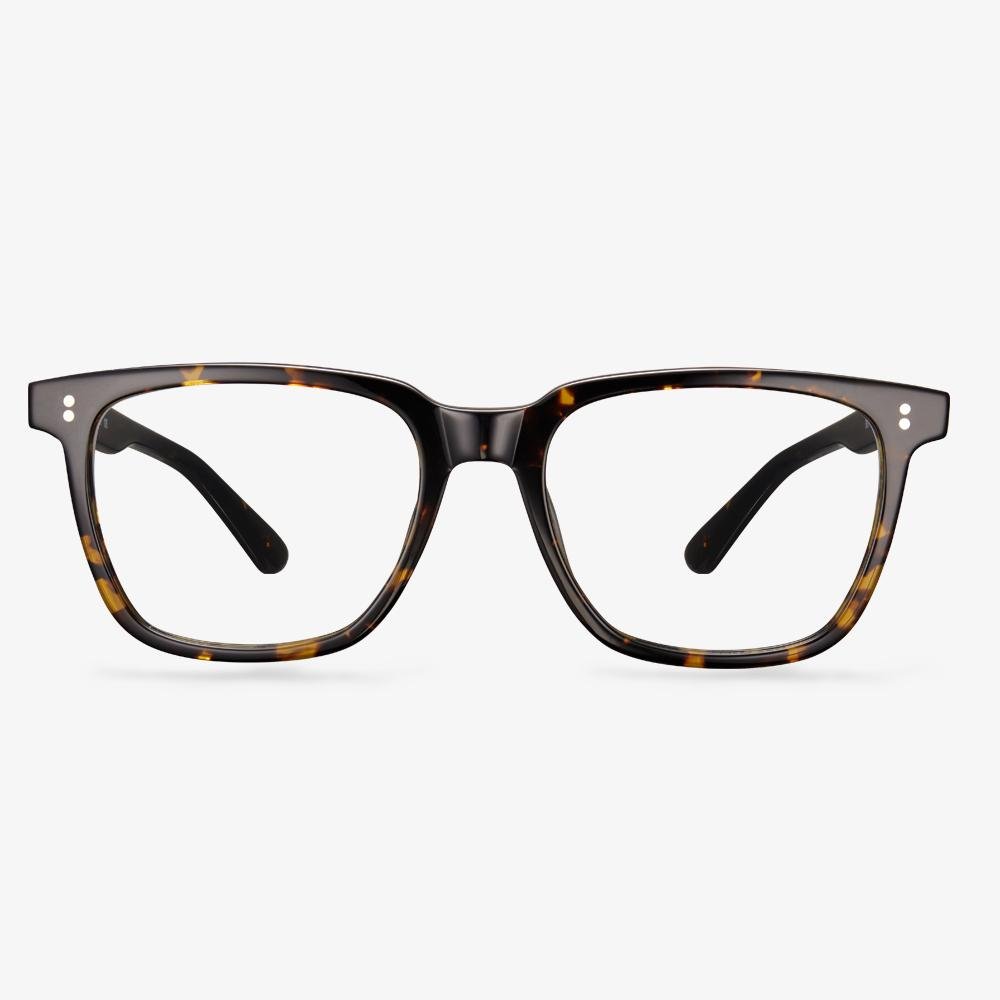What Glasses Are Made Of?
In general, most glasses are made of plastic lenses. Why are glasses lenses made of plastic? In fact, plastic glasses are lighter than traditional glasses lenses used in eyeglasses, which means they are more comfortable to wear. At the same time, it is easy to apply lens coatings like anti-reflective to plastic lenses.
Besides, children’s glasses are also made of plastic because it is more resistant to impact. There are four main types of plastics used to make eyeglasses and sunglasses lenses which are plastic, Trivex, polycarbonate and high-index plastics.
The plastic lenses made from CR-39 were first introduced. CR-39 is an abbreviation for Columbia Resin #39, the 39th plastic of that type made by Columbia Resin.
Then the polycarbonate glasses were invented. Polycarbonate became out of this world once it found use in aeronautics. Polycarbonate is a type of plastic that can be produced as transparent and easily shaped, making it great for glasses lenses. Polycarbonate is impact resistant so that they are a good lens choice for kids. And the polycarbonate lenses have 100% UV protection.
Next, high-index lenses are available. High-index lenses have a high refractive index with a thin lens. Although high-index lenses are thinner, they are heavier due to the higher density of these plastics.
So, what glasses are made of? Most glasses are made of plastics. Then how are glasses made? To get the answer, keep on your reading.
Possible effects of driver's lens color on driving
Color plays a very important role in your everyday driving experience -- red, yellow, and green traffic lights, among many other signs and signals, are designed to grab your attention and keep you safe. If everything you see is yellow, you may make the wrong decision at the red light and may cause an accident. To keep your vision clear in night and day conditions, anti-glare night driving glasses are not just for night driving.
Why should you take care of your rimless glasses?
Rimless glasses are not supported by the outside of the lens frame but are supported directly by the temples of the glasses.Because rimless glasses only rely on both sides of the temples directly with the lens joint, with less protection of the lenses ring. It is easy to cause lens wear, screw loose, so special attention should be paid to maintenance.
What Is Anti Reflective Coating?
Anti reflective coating, also known as AR, anti-glare, no-glare, or glare-free coating, can provide benefits to your vision. Anti reflective coating is added to lenses to reduce glare caused by light hitting the back of the lenses to improve your vision and make your eyeglasses more visually attractive.
Anti reflective coating will eliminate all reflections from the front and back surfaces of your lenses. Hence, more light is able to pass through your lenses which improves your vision. At the same time, fewer distractions are visible and the lenses are hardly noticeable, especially in the dark. So, is anti glare worth it? Most people agree that.
What Are Trifocal Lenses?
When you are over 40 years old, your eyes may become old, too. Your corrective lens requirements may become increasingly unique, Most people are familiar with bifocal glasses but unfamiliar with trifocal glasses. So, in this post, we will show you what trifocal glasses are.
Trifocal lenses have three different corrective lenses within one lens to offer you intermediate, distance, and near correction, all in one pair of glasses. The varying levels of correction cab are laid out in a couple of different ways to ensure the layout suits your unique vision needs and comfort level.
The near vision is to correct close-up vision, the intermediate vision is often used for card playing and staring at the computer screen fall with this range of vision, and the distance vision is often used for driving or looking at a whiteboard.
What Do the Numbers on Glasses Mean?
The first number on glasses frames is the eye size. It is the horizontal width of the lenses. In general, the number of eye sizes varies from 40 mm to 62 mm in most of the spectacle frames.
The second number is the bridge size. It is the distance between the lenses. Also, it is the bridge that rests upon your nose. Mostly, the size of the bridge on glasses frames would be from 14 mm to 24 mm.
The third number is the temple length. It is the length of the stems of the frame that rests upon your ears. It can be measured from hinge to the end tip of the temple. In general, the temple length in most cases is from 120 mm to 150 mm. The bridge and temple help the frame to comfortably fit on the face.
Meanwhile, if there are no numbers on glasses frames, do not worry. You can always measure your eyeglasses frame with a millimeter ruler. Sometimes, the tiny numbers are worn off or sometimes they are printed too small that you might have to use the magnifying glasses. If you have known the glasses numbers meaning, you can choose to measure them by yourself.
At the same time, to fit the glasses better, you can also choose to measure your face for glasses frames. After knowing the suitable size of glasses, you can choose to buy a pair of glasses online. Thus, Koalaeye Optical is recommended. It is an online glasses store and provides all kinds of glasses, sunglasses, and frames. What’s more, these glasses are stylish and cheap.
What are polarized lenses for?
Polarized lenses contain a layer of polarizing plates in which molecular chains form a light-grating structure in which dichromatic pigments, which absorb polarized light, are evenly distributed. A beam of light is absorbed when it vibrates in the same direction as the bars of the molecular chain of the polarized lens. The grating direction formed by the molecular chain of the polarizer is the axial direction of the polarizer, which is generally horizontal. When polarized lenses are worn, they absorb all the light that vibrates horizontally, thus absorbing the glare and preventing it from reaching the eyes.











































